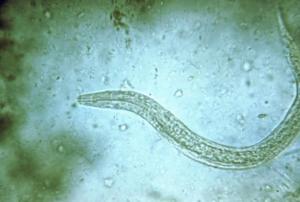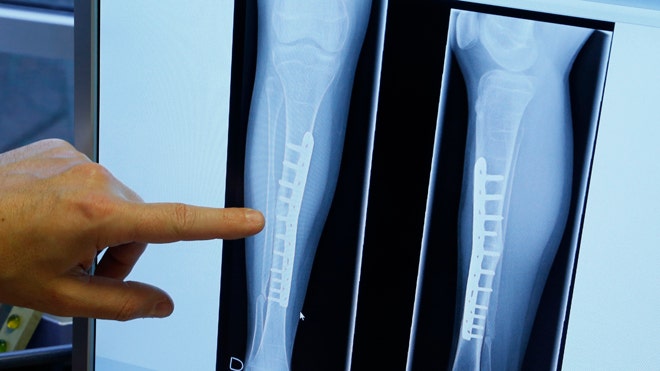Scientists have decoded the genome of a lowly, blood-sucking hookworm, an advance they say could lead to cures for hookworm infection, a painful condition afflicting more than 700 million people worldwide, mostly in underdeveloped countries.
But the worm’s unique relationship with the human immune system means the new findings may also provide insights into treating autoimmune diseases rampant in the United States, such as inflammatory bowel disease, multiple sclerosis, asthma and allergies.
An international team of scientists focused on one of the two main hookworm species that affects humans, Necator americanus. These parasites start their lives in soil, and enter the human body through the foot, where they embark on a fantastic voyage through the blood vessels, to the heart, then into the lungs and trachea before being coughed up and swallowed and carried to their final home in the small intestine.
Once in the intestines, the centimeter-long worms can live for up to five years, mating and producing 10,000 eggs daily. They feed on blood, so much so that an infected person can become iron deficient through blood loss. For children, infection can stunt growth and cause severe cognitive deficits.
The decoded genome of Necator americanus, published today (Jan. 19) in the journal Nature Genetics, may reveal an Achilles heel — a pathway for a vaccine or drug that could either kill the worms, thwart their reproduction, or minimize the damage of their infestation.
“We now have a more complete picture of just how this worm invades the body, begins feeding on the blood, and successfully evades the host immune defenses,” said Dr. Makedonka Mitreva of Washington University School of Medicine in St. Louis, senior author on the report, which included researchers in Australia, Singapore and Brazil.
Hookworm disease is endemic through much of the warm, rural world where people lack indoor plumbing, and is particularly common in poorer regions where children have no shoes to protect their feet. Hookworm disease was once prevalent in the southern United States, and was a major public health concern there as recently as the 1940s.
Hookworm infection is not deadly for most people, although newborns and pregnant women may die from infection. However, its reoccurring nature takes its toll in the form of chronic anemia and lassitude, leading to slow learning among children, low productivity among affected working adults, and a continuation of the cycle of poverty.
Deworming drugs are available, and are often relatively inexpensive, but their repeated and excessive use is leading to drug resistance in some regions.
Improved sanitation and use of shoes are proven to reduce infections, as was shown in the American rural south. Yet in desperately poor regions of the world, new drugs or a one-time vaccine would be a godsend.
Such treatments could arise from research on the decoded hookworm genome, Mitreva said.
The study of the hookworm could lead to treatments of other diseases as well.
One of the silver linings of chronic worm infection is that the vigorous workout it gives the immune system of an infected person is associated with a reduced risk of allergies and autoimmune conditions. Indeed, helminthic therapy —deliberately infecting a person with helminths, a group of parasites that include hookworms, tapeworms, and roundworms — recently has shown progress in the treatment of Crohn’s disease, a type of inflammatory bowel disease, as well as other immune-mediated diseases.
As part of decoding of the Necator americanus genome, the researchers identified a group of molecules that appears to protect the worm from detection by the host immune system. Hookworms evade notice by suppressing molecules that promote inflammation. This very same approach, the researchers wrote, may prove valuable in the treatment of autoimmune conditions.
“It is our hope that the new research can be used as a springboard, not just to control hookworm infections, but to identify anti-inflammatory molecules that have the potential to advance new therapies for autoimmune and allergic diseases,” Mitreva said.
Necator americanus and its hookworm cousin, Ancylostoma duodenale, also can infect dogs and cats. And under certain conditions, your pet’s hookworms could infect you, for example, if the pet feces in your backyard contain the worm’s eggs, and soil conditions are right.
Source: Yahoo news








 An innovative ‘surgical patch’ that promotes rapid regrowth of tendon tissue could transform the success of shoulder repair operations.
An innovative ‘surgical patch’ that promotes rapid regrowth of tendon tissue could transform the success of shoulder repair operations.


